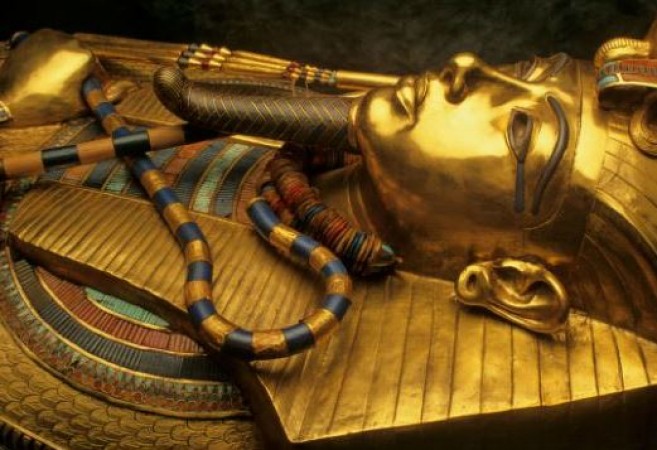
The story of King Tutankhamun, famously known as King Tut, continues to captivate the world centuries after his death. The discovery of his tomb in 1922 by archaeologist Howard Carter brought with it a sense of wonder and mystery. The boy king's tomb was filled with treasures beyond imagination, but it was also shrouded in an enigmatic curse that sparked intrigue and fear in equal measure. In this article, we will delve into the mysteries surrounding King Tut's tomb and the infamous curse that surrounded its discovery.
The Discovery of King Tut's Tomb
In 1922, Howard Carter's relentless pursuit of the tomb of King Tutankhamun paid off. The tomb, located in the Valley of the Kings in Egypt, was a monumental archaeological find. The riches and artifacts found inside gave researchers a rare glimpse into the opulence and grandeur of ancient Egyptian civilization.
Unveiling the Mummy
The mummy of King Tut was a significant discovery that allowed researchers to learn more about the life and death of this young pharaoh. Detailed examinations of the remains provided insights into his health, appearance, and possible cause of death.
The Legend of the Curse
4.1 The Mythology Surrounding the Curse
Legend has it that the tomb of King Tut was cursed to protect it from desecration. The concept of a "curse of the pharaohs" was not unique to King Tut's tomb, but its association with the boy king added an aura of mystique to the legend.
4.2 Mysterious Deaths and Speculations
Following the discovery of the tomb, several people associated with the expedition met untimely deaths. This fueled speculation that the curse had been unleashed as a punishment for disturbing the resting place of the pharaoh.
Scientific Investigations
5.1 Analyzing the Curse Claims
Despite the apparent evidence of the curse, scientists and archaeologists remain skeptical. They attribute the deaths to natural causes, coincidence, or other factors unrelated to the curse.
5.2 Logical Explanations
Many believe that the curse was a creation of media sensationalism and superstition. Logical explanations point to bacteria, toxic gases, or infectious diseases present in the ancient tombs, which could have caused the deaths of those who entered.
Cultural Impact and Popularity
The legend of the curse captured the public's imagination and resulted in a surge of interest in ancient Egyptian history and archaeology. King Tut's legacy extended beyond the confines of academia, influencing art, literature, and popular culture.
The Hidden Treasures of King Tut
7.1 A Glimpse into Ancient Egyptian Life
The artifacts found in King Tut's tomb shed light on the religious beliefs, daily life, and artistic achievements of ancient Egyptians.
7.2 Artifacts and Their Significance
The golden mask, chariots, jewelry, and other treasures showcased the skilled craftsmanship and immense wealth of Egypt during Tutankhamun's reign.
The Legacy of King Tut
King Tut's short reign had a limited impact on Egypt's history, but his tomb's discovery turned him into an iconic figure, representing the splendor and mysteries of ancient Egypt.
Debunking the Curse
Experts and researchers continue to debunk the curse myth, emphasizing the importance of critical thinking and scientific analysis in understanding historical events.
Modern Expeditions and Research
Ongoing research and expeditions in Egypt continue to unearth new discoveries and expand our understanding of the ancient civilization.
The Preservation of King Tut's Tomb
Efforts to preserve and protect King Tut's tomb ensure that future generations can also marvel at its historical significance.
The Influence of Ancient Egypt on Today's World
Ancient Egypt's legacy can be seen in various aspects of modern society, from architecture and art to medicine and astronomy.
The tale of King Tut's tomb and the alleged curse has left an indelible mark on the world's imagination. While the myth of the curse continues to enthrall, it is essential to remember the scientific pursuit that underlies historical discoveries. King Tut's tomb stands as a testament to the wonders of ancient Egypt and the eternal human quest for knowledge and understanding.
India's Defense Minister Declares Bold Stand: Ready to Cross LoC to Safeguard Honor and Sovereignty
Burning Fury in Manipur: Mob Torches Buses Amidst Violent Protest, No Casualties Reported